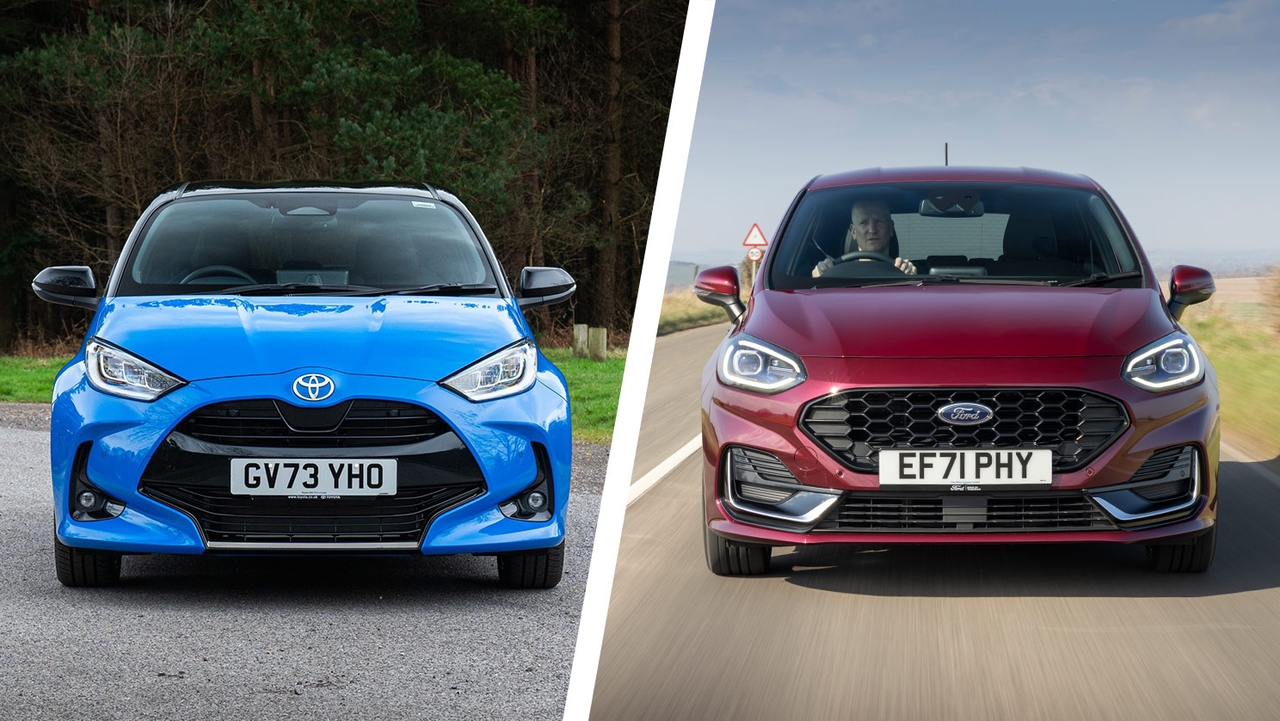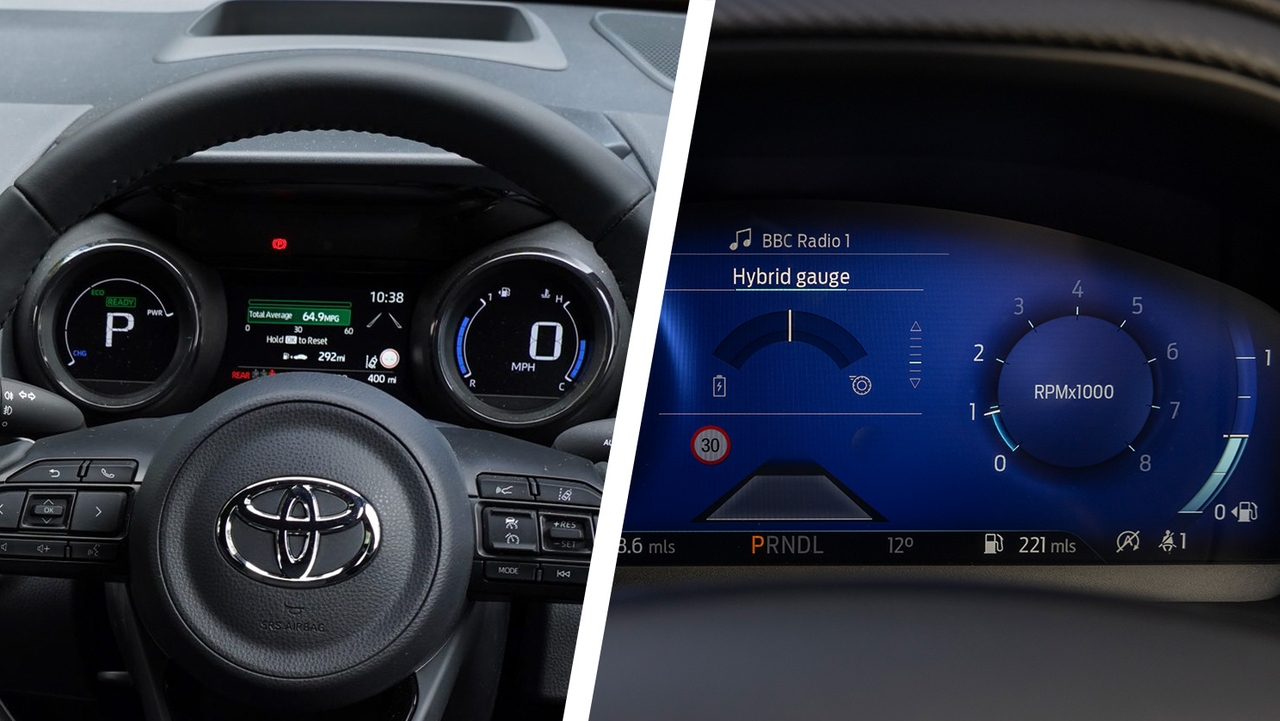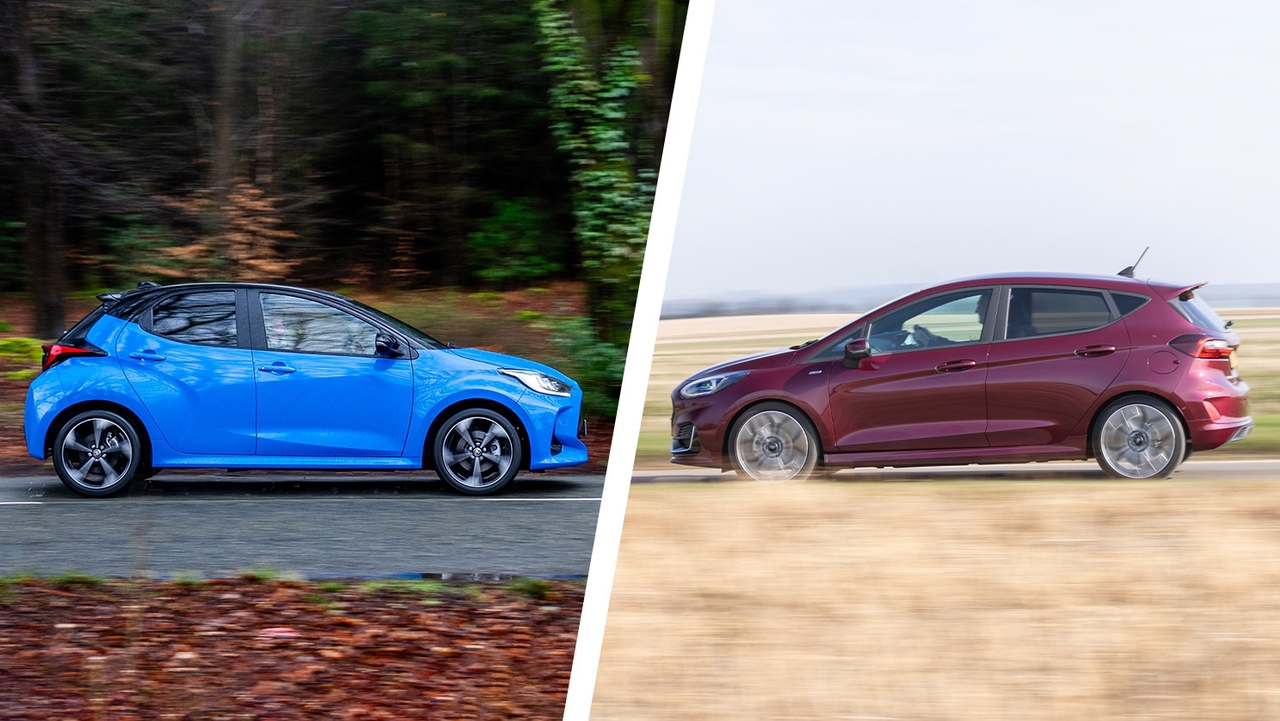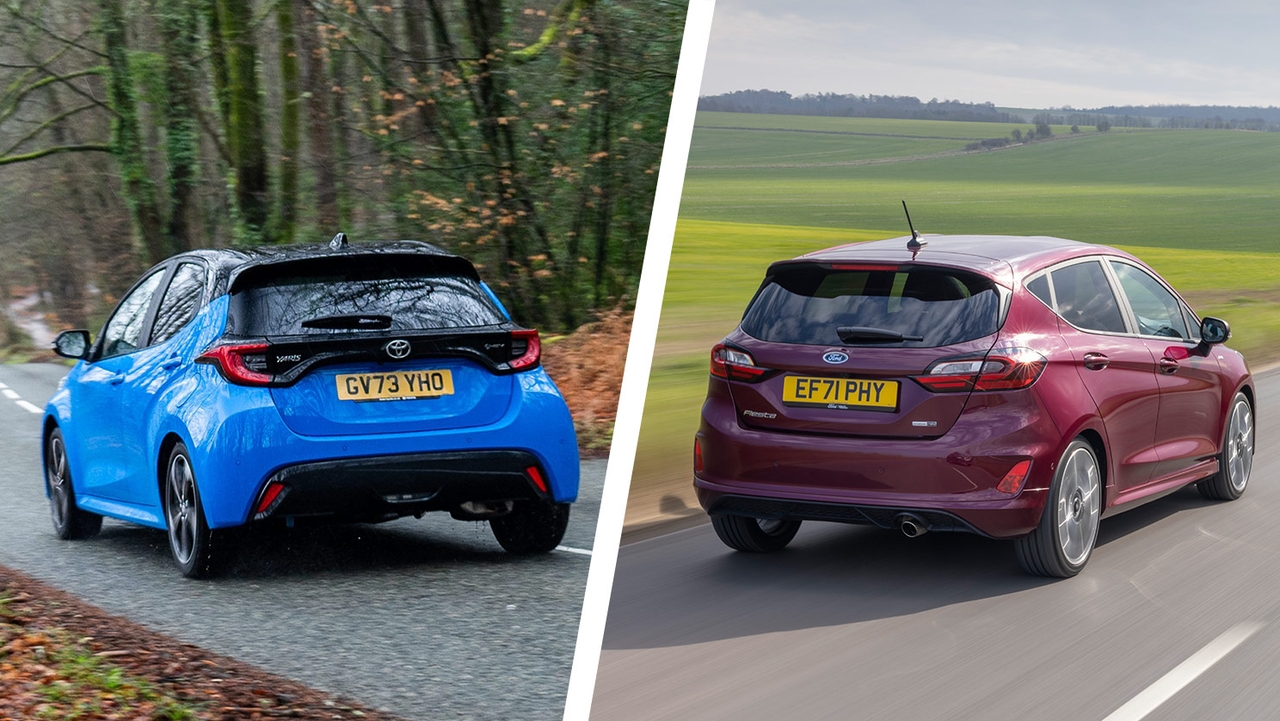For many buyers, the best-selling Ford Fiesta remains an obvious choice for its handling, city-friendly dimensions and sensible pricing.
However, the fourth-generation Toyota Yaris is massively improved compared to its predecessor. It's well worth cross-shopping if you're after a small hatchback, offering a slightly different take on the formula than the perennial Ford.
We'll take a look at both cars side-by-side so you can pick your favourite. Whichever you choose, find out how much you could save by buying a used Toyota Yaris or a used Ford Fiesta from Motorpoint. For a more in-depth look, check out our full Toyota Yaris review and Ford Fiesta review.
Toyota Yaris vs Ford Fiesta overview
Both the Toyota Yaris and Ford Fiesta are great supermini choices. Here's how they stack up:
- Intended use: the Yaris and Fiesta are well suited to tight city streets. Great for single or couple buyers who carry occasional rear passengers.
- Practicality: the Fiesta has a bit more rear-seat and cargo space than the Yaris.
- Cost: the Yaris and Fiesta are very similarly priced, especially considering the Yaris is auto-only.
- Size: the Yaris is 100mm shorter and 10mm wider than the Fiesta – you won't really notice this difference behind the wheel.
- Safety: both the Yaris and Fiesta are safe with five-star Euro NCAP ratings. The Yaris earned its rating in 2020, while the Fiesta was awarded in 2017.
Toyota Yaris vs Ford Fiesta compared
| Toyota Yaris | Ford Fiesta |
Pros:
| Pros:
|
Cons:
| Cons:
|
Styling and design

Parked next to one another, the Fiesta seems marginally bigger in the metal – an impression that's borne out by its extra 100mm length. However, the main reason the Yaris feels smaller is thanks to its noticeably curved roofline. In comparison, the Fiesta has a more upright rear end, and even fits a small quarterlight window behind the rear door. We'll cover the practicality in more detail below, but the Fiesta's extra space does translate to a little extra rear-seat and cargo room.
As for which is the best-looking car, we'll leave that up to you. The Yaris has slightly 'busy' styling, with a lot of angles and oversized headlights, but it's not unattractive – especially in GR Sport trim, which gets big alloy wheels and an exposed exhaust pipe. We like the Fiesta in profile with its sinewy body sculpting, but we're not totally sold on its most-recent facelift – shown here – as the oversized front grille now looks a little exaggerated compared to its more elegant pre-facelift look.
Interior and practicality

These are both supermini hatchbacks built to a price, so you can't expect top-drawer luxury from either. Nevertheless, there are some neat details to make life on board a bit nicer. We quite like the Yaris' funky 'binocular'-style instrument cluster, although you'll have to decide whether you prefer it to the digital dials available in top-spec Fiestas. Everything else is easy to use, with straightforward physical climate controls and handy shortcut buttons for the infotainment system.
In comparison, the Ford's cabin design is a little less distinctive, although its climate controls and infotainment shortcuts are just as easy to use. Entry-level models can feel a little cheap in places, so we'd suggest hunting down one of the popular ST-Line cars, which get sporty red stitching and perforated leather on the steering wheel. ST-Line X cars and top-spec Fiesta ST hot hatches get even more body-hugging sports seats.
If you're a single or couple buyer, both the Yaris and Fiesta should be large enough for your needs. Neither car is especially suited to carrying regular rear-seat passengers – there isn't really enough room for a bulky child seat, and six-foot adults will quickly run out of head and legroom. That said, your occasional rear-seat occupants will have just a touch more room and easier access in the Fiesta. On paper, the Yaris's 286-litre boot is only a fraction smaller than the Fiesta's 292-litre space but, in practice, the Ford's space feels squarer and more useful, with easier access through the hatchback boot lid.
Engines and performance

The Yaris's engine range is simple. There's just one option – a 1.5-litre full-hybrid with an automatic gearbox. Most models make 116hp, although some more recent high-spec cars are boosted to 130hp. That doesn't sound like a recipe for driving fun, and that's mostly true, but it's very easy to drive with smooth acceleration from its engine/motor combo and fast reactions in urban traffic. Hard acceleration will cause the engine revs to flare up noisily but the Yaris will comfortably get up to motorway speeds without breaking a sweat.
There's a little more flexibility in the Fiesta's lineup. Most models come powered by Ford's 1.0-litre EcoBoost turbo petrol engine. This is available in a selection of power outputs but all versions feel punchy on the road, aided by the car's snappy manual gearbox. A dual-clutch automatic is optional and works well, but can't match the EV-like linear acceleration of the Yaris. Hunting deeper into the used Fiesta market also reveals affordable non-turbo 1.1-litre options – good options for new drivers – along with the occasional 1.5-litre diesel model that's a good choice for high-mileage drivers.
If you want to go fast in either car, both cars have you covered. The Ford Fiesta ST outfits the popular hatchback with a muscular 1.5-litre turbo petrol engine and 200hp for zippy real-world performance. In comparison, the Toyota GR Yaris is a much more serious performance car, with a unique three-door body shape, four-wheel drive and nearly 260hp from its red-eyed 1.6-litre turbo engine.
Driving

On the road, the Yaris is surprisingly fun to drive – an area where its predecessors failed to make much impression. The body remains resolutely level through cornering and the fast steering means the Yaris feels impressively agile through quick direction changes. Its oddly athletic handling feels a little at odds with the Yaris's hybrid engine, however, which is most impressive when you're just quietly cruising about rather than driving spiritedly. By the same measure, we wish the Yaris was a little more softly sprung as it can sometimes thud over bumps, and a more compliant setup would make it a little nicer for daily driving.
While the Yaris's new-found dynamic abilities are impressive, the Fiesta's always been fun to drive. Recent models strike a great balance between ride and handling, with plenty of agility on display through corners but enough softness over bumps that it's not tiring to drive for long periods. You could argue that the Yaris's seamless automatic gearbox makes it the slightly calmer car to commute in but the Fiesta is such a great all-round driving car that there are few driving jobs it doesn't excel at.
Value and reliability

Since you can't buy the Fiesta new anymore, we're only looking at the used market. The Yaris and Fiesta track each other closely on price, although there are more entry-level options in the Ford's lineup, so you can usually get into a Fiesta for less than a Yaris. If you shop like-for-like models, and take into account that all Yaris cars are automatic, than the price difference between that and an automatic Fiesta is usually just a few hundred pounds.
As for reliability, the Yaris takes a clean win in this area, with Toyota as a whole enjoying a legendary reputation for dependability, and recent models offering up to 10 years warranty cover if you keep the car serviced with Toyota. A well-maintained Ford Fiesta should also prove to be very reliable but it's true that the blue-oval brand doesn't score as well as Toyota in most reliability surveys. You can always alleviate any reliability worries by speccing either car with an extended warranty.
Which is best?

These are both city-friendly superminis but they arguably suit slightly different drivers. The Yaris is the easier car to drive, with its smooth automatic gearbox, simple dashboard and level-headed handling. Driving the Fiesta is a little more involved in comparison, but it's arguably more fun thanks to its better ride and handling balance. You might save a little money by choosing an entry-level Fiesta, but consider that the Yaris's excellent real-world fuel economy and low maintenance costs mean your total cost of ownership might be very low indeed.
Take a look at the savings available by shopping used Toyota Yaris and used Ford Fiesta cars for sale at Motorpoint. For more tempting options, check out our picks for the best superminis on sale. See our Toyota Yaris review or our Ford Fiesta review to learn what these cars are like to live with.

































